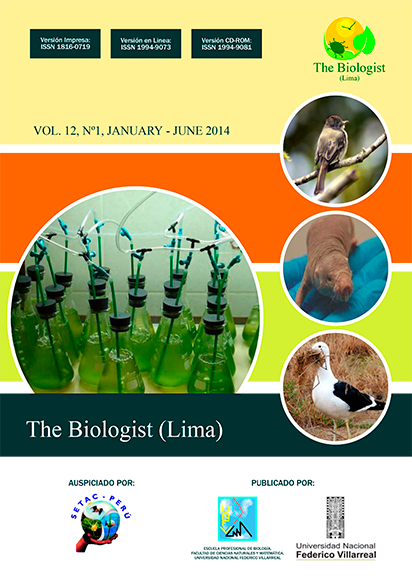METHOD FOR COLLECTING COELOMOCYTES FROM EURYTHOE COMPLANATA (ANNELIDA: AMPHINOIDAE) WITH POTENTIAL APPLICATION IN TOXICOLOGY
DOI:
https://doi.org/10.24039/rtb2014121388Palabras clave:
Coelomocytes, Eurythoe complanata, Immunocompetition, Polychaete.Resumen
Benthic organisms have been proposed as good indicators of disturbance in marine environments, particularly because most toxins fall to the bottom of the sea affecting benthic communities. A non-invasive method for collecting coelomocytes was developed using the marine polychaete Eurythoe complanata with potential applications in xenobiotic toxicology. The extrusion method used produced the expulsion of 95% of the coelomic fluid, showing a greater efficiency than the puncture method in Lumbricus terrestris with regard to the total number of coelomocytes and cellular viability. The total coelomocyte count by this method was 6 -1 6 -12.6 x 10 cells·mL vs 1.4 x 10 cells·mL for the puncture method. The results indicate that coelomocyte numbers completely recover at 20 days after extrusion, using the total cell count, cell viability and differential count. This method was developed to study immunotoxicity of xenobiotics at the sediment-water interface of marine environments.Descargas
Descargas
Publicado
Cómo citar
Número
Sección
Licencia
Derechos de autor 2020 The Biologist

Esta obra está bajo una licencia internacional Creative Commons Atribución-NoComercial-SinDerivadas 4.0.
Objeto: El AUTOR-CEDENTE transfiere de manera TOTAL Y SIN LIMITACIÓN alguna al CESIONARIO (Revista The Biologist (Lima)) los derechos patrimoniales que le corresponden sobre sus obras por el tiempo que establezca la ley internacional. En virtud de lo anterior, se entiende que el CESIONARIO adquiere el derecho de reproducción en todas sus modalidades, incluso para inclusión audiovisual; el derecho de transformación o adaptación, comunicación pública, traducción, distribución y, en general, cualquier tipo de explotación que de las obras se pueda realizar por cualquier medio conocido o por conocer en el territorio nacional o internacional.
Remuneración: La cesión de los derechos patrimoniales de autor que mediante este contrato se hace será a título gratuito.
Condiciones y legitimidad de los derechos: El AUTOR-CEDENTE garantiza que es propietario integral de los derechos de explotación de la(s) obra(s) y en consecuencia garantiza que puede contratar y transferir los derechos aquí cedidos sin ningún tipo de limitación por no tener ningún tipo de gravamen, limitación o disposición. En todo caso, responderá por cualquier reclamo que en materia de derecho de autor se pueda presentar, exonerando de cualquier responsabilidad al CESIONARIO.
Licencia de acceso abierto: El AUTOR-CEDENTE autoriza que manuscrito publicado en la Revista Científica The Biologist (Lima) (versión Impresa ISSN 1816-0719, versión en línea ISSN 1994-9073) permanece disponible para su consulta pública en el sitio web http://revistas.unfv.edu.pe/index.php/rtb/index y en los diferentes sistemas de indexación y bases de datos en las que la revista tiene visibilidad, bajo la licencia Creative Commons, en la modalidad Reconocimiento-No comercial- Sin Trabajos derivados –aprobada en Perú, y por lo tanto son de acceso abierto. De ahí que los autores dan, sin derecho a retribución económica, a la Escuela Profesional de Biología, Facultad de Ciencias Naturales y Matemática de la Universidad Nacional Federico Villarreal (EPB - FCCNM - UNFV), los derechos de autor para la edición y reproducción a través de diferentes medios de difusión.









































